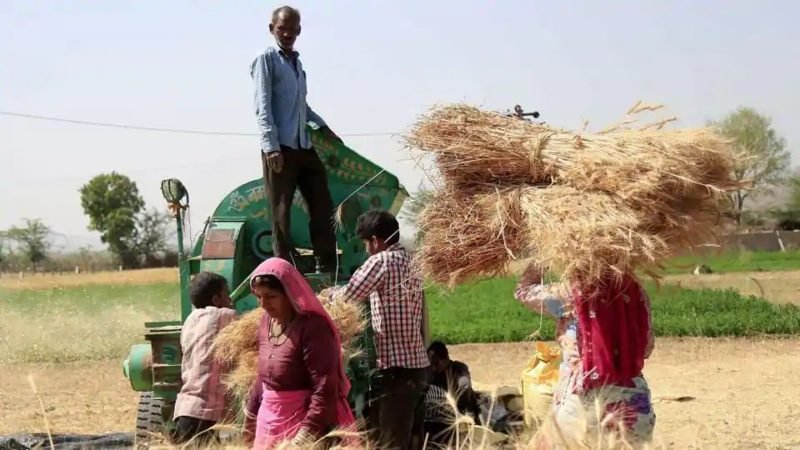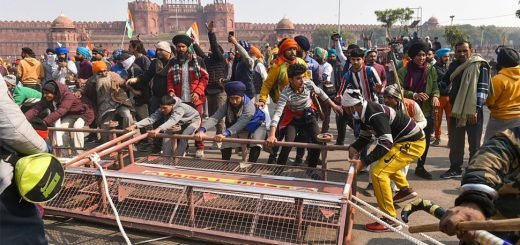Corona and Food Security: Are we there?

Human society is overpowered with bundles of ‘rights’ right above their heads giving them the successful illusion of their safety and overall existence. When we talk of human rights, the right to have access to adequate and nutritious food comes with prime importance. United Nations Sustainable Development Goals focus on different aspects of human existence creating a sync between human development and nature through its seventeen Sustainable Development Goals (SDGs) addressing important issues like poverty, hunger, health, education, etc. Its second goal (SDG2) focusses on ‘Zero Hunger’ which ensures to end hunger, achieve food security, and improved nutrition and to promote sustainable agriculture.
With the outbreak of COVID-19, a pandemic which has created an outcry in the whole world, the first and foremost concern has been to protect oneself from this virus. Saving lives through providing healthcare at the war front and restricting the spread of the virus through social distancing has put the whole world on a standstill.

COVID-19 has not just affected our health but has imposed a threat to SDG 2 (Zero Hunger) due to imposed lockdown which is the only mean of restricting the spread of this virus in the community. People are forced to stay indoors and many industries and offices are shut down leaving many migrant and landless workers penniless, adding to their ordeal of job losses and food insecurity. According to WHO, food security is “when all people at all times have access to sufficient, safe, nutritious food to maintain a healthy and active life”. Food security is a matter of global concern and there are food programs around the world that have described the components of food security as food availability, food access, and food utilization (USAID).
In a country like India, the food system is already fragile as most of the workforce in important sectors like agriculture, are mostly migrant workers and with the imposed lockdown due to COVID-19 have headed back to their homes. This sector has been affected badly with the limited number of workers in the field and with current scenario of unexpected and erratic rains, harvesting of the wheat crop, which had bumper produce this year has been disrupted leading to huge losses not only to farmers but has caused a challenge of ensuring food grain supply in the coming months.
The National Food Security Act, 2013 came into action to strengthen the existing food security programs of the Government of India including the Midday Meal Scheme, Integrated Child Development Services scheme, and the Public Distribution System, through legal entitlements. Where the Midday Meal Scheme and the Integrated Child Development Services Scheme covers whole beneficiaries, the PDS reaches about two-thirds of the population (75% in rural areas and 50% in urban areas) (NFSA, 2013). During this crisis, GoI is making use of these schemes with the help of its state governments to ensure food supply to people in need which is expected to be around 800 million. At present PDS ensures the supply of 5kgs of either food grain (rice or wheat) and 1 kg of preferred pulse per month free in addition to the preexisting quota of 5kg of low-cost grain per person per month. Moreover, the NFSA beneficiaries will also get 10kgs of wheat/rice for the next three months under Pradhan Mantri Garib Kalyan Package.
The efficacy of this system of public distribution plays a vital role in ensuring much-needed food security to the community. The concept of food security includes both physical and economic access to food that meets people’s dietary needs as well as their food preferences. “No one should die just because they are poor, or because they cannot access the basic services they need” (WHO). However, the coverage of PDS is lower in urban areas (50%) which imposes a challenge among those people who cannot afford food at this time with no money in hand. Delhi government made the first move in this regard to provide free ration to non-ration cardholders and many states have now announced the same. The government of Kerala has become pro-active and started the distribution of food kits consisting of 17 items worth INR 1000, from 8th April for every household, irrespective of income status through the ration shops under PDS (FAO report).

At present, the government warehouses have approximately 71 million tons of rice and wheat, which is supposed to be thrice of what we need to feed our country for one year. It is therefore clear that food availability is adequate, but what we require is its access and utilization (components of food security) for the public.
There is no doubt that the existing food security program is somewhat proving to be effective at this crisis due to COVID-19. However, there is a huge gap in the practicality of its efficacy. The ration cards at present have been issued according to the 2011 census data. Since then the population of our country has increased by over 177 million and these 177 million people are non-existent in our database. As per a report by Jean Drèze, Reetika Khera, and Meghana Mungikar (economists) more than 100 million people are excluded from the public distribution system (PDS) because the Central government insists on using the 2011 figures to calculate state-wise PDS coverage. There are cases for instance, where the ration card holds the name of 3 persons (2011 census) but the family has to feed 6 persons now, which creates the worry of meeting the dietary need of the whole family. How are they going to feed these 3 members?
The overall structure at present presents for the people which can provide food for these needy and vulnerable citizens should include Anganwadi centres and mid-day meal program. Before this COVID-19, PDS, Anganwadi centres, and mid-day meal program were cumulatively working for the cause of hunger and nutrition, but, after this crisis, only PDS is in force in a much practical form. The responsibility of these 177 million people who are not in the list of beneficiaries is directly coming on the heads of these food distribution systems. So there is a head-to-head collision between overcrowded but less powered bundles of ‘rights’ with the policymakers who have not recorded these 177 million people during structuring the policies addressing those ‘rights’. The collision could be fatal, thereby, creating a double burden on the policymakers.


















